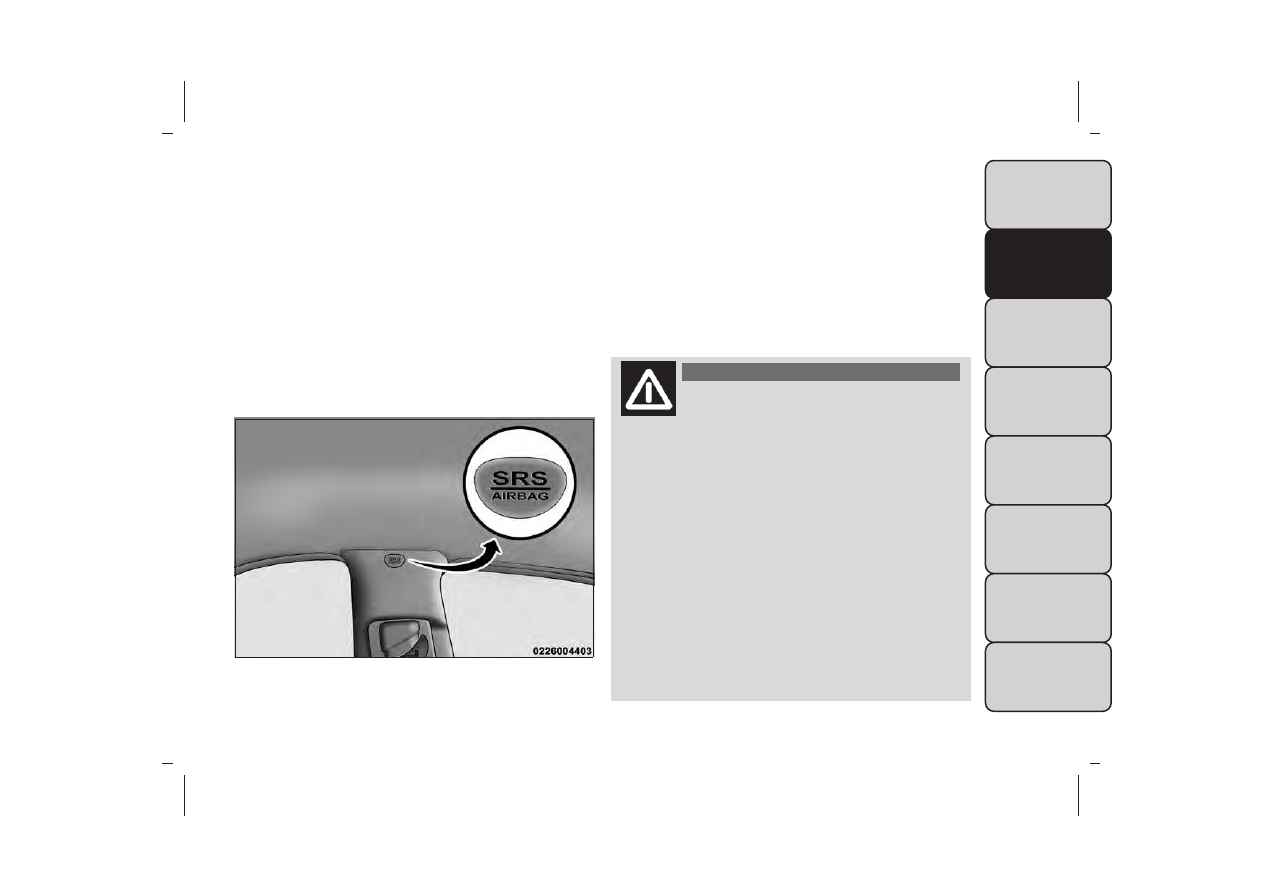Fiat Freemont (2016 year). Manual - part 14

2. Supplemental Side Air Bag Inflatable Curtains
(SABICs): Located above the side windows. The
trim covering the SABICs is labeled SRS AIRBAG or
AIRBAG. (fig. 140)
SABICs may help reduce the risk of head injury to
front and rear seat outboard occupants. SABICs
may reduce the risk of injuries in certain side impact
and vehicle rollover events, in addition to the injury
reduction potential provided by the seat belts and
body structure.
The SABICs deploy downward, covering the side
windows. An inflating SABIC pushes the outside
edge of the trim out of the way and covers the
window. The SABICs inflate with enough force to
injure you if you are not belted and seated properly,
or if items are positioned in the area where the
SABICs inflate. Children are at an even greater risk
of injury from a deploying air bag.
The SABICs may help reduce the risk of partial or
complete ejection of vehicle occupants through side
windows in certain rollover or side impact events.
WARNING!
• Your vehicle is equipped with left and
right Supplemental Side Air Bag Inflat-
able Curtains (SABICs). Do not stack luggage or
other cargo up high enough to block the deploy-
ment of the SABICs.The trim covering above the
side windows where the SABIC and its deploy-
ment path are located should remain free from
any obstructions.
• Your vehicle is equipped with SABICs. In order
for the SABICs to work as intended, do not install
any accessory items in your vehicle which could
alter the roof.Do not add an aftermarket sunroof
to your vehicle. Do not add roof racks that re-
quire permanent attachments (bolts or screws)
for installation on the vehicle roof. Do not drill
into the roof of the vehicle for any reason.
(fig. 140)
Supplemental Side Air Bag Inflatable Curtain (SABIC)
Label Location
209